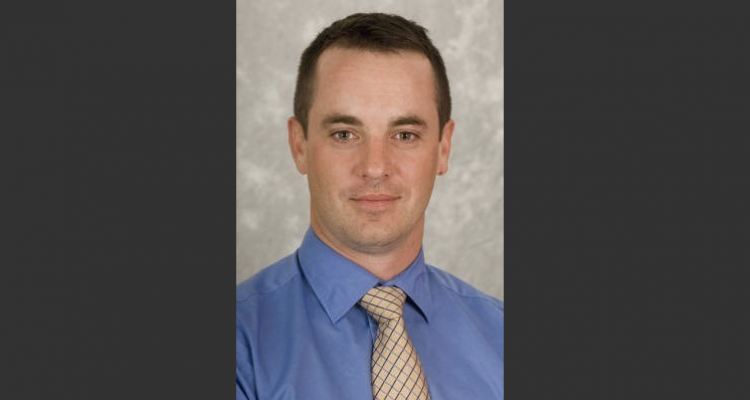The Fairfield University rowing program is composed of 91 student-athletes, making it one of the larger programs in the Department of Athletics. At the helm of it all is David Patterson, Ph. D, who acts as not only the director of rowing, but also as the head coach of the women’s rowing team. While handling many responsibilities on the athletic-professional end, he is also a devoted father and husband.
Patterson’s day starts bright and early at 4:50 a.m. in order to be on campus by 5:30 a.m., to make sure that transportation is ready to take athletes to the boathouse in Norwalk, Conn. for practice each morning. Normally, the men’s and women’s teams would make the daily commute together at around 5:45 a.m., but due to COVID-19 guidelines, smaller practice groups have been coordinated to ensure that social distancing is enforced as much as possible.
The teams aim to push off of the docks at 6:10 a.m. and row for about two hours before heading back to campus by 8:45 a.m. so that rowers can begin the academic portion of their schedules. While the student-athletes continue their day in the classroom, coach Patterson’s duties continue as an administrator and recruiter, as he is the only full-time employee in charge of rowing. Although he typically clocks out at about 4:30 p.m. each day, his phone never stops buzzing with communications from athletes coming in at all hours of the evening.
A huge obstacle currently faced by Patterson, as well as rowing professionals around the globe, is finding a way in which rowing can resume in accordance with COVID-19 safety procedures.
“The NCAA [National Collegiate Athletic Association] has designated it as a high risk sport, based on the proximity of the seats in the boat,” stated Patterson. This made the task of resuming practicing all the more complex to maneuver.
Although he understands the complexity of the concerns at hand, he noted that what brings him peace of mind is the fact that local clubs have been rowing safely since June. He is confident that the best course of action to prevent outbreaks within the program is increased testing. Beyond testing, Patterson is exceptionally strict about mask-wearing during practices, and accommodates his rowers’ needs by giving them ample time to pause in the middle of workouts to take “mask-breaks” in a safe and secluded way. Two components of rowing which have proven to be beneficial during this public health crisis are that not only do athletes not face each other while rowing, they also train outdoors in the open air.
This season has already been exceptionally different for all teams on this campus, but rowing has been tasked with challenges unique to their sport. For example, rowing is the only team at Fairfield who didn’t see a minute of competition before the University shut down. This means that there are many sophomores who are still completely unfamiliar with the sport on a collegiate level. This year, these athletes will only have a mere few weeks of practice on the water before it gets too cold to practice in the weather.
“One of the greatest things about rowing is the opportunity for novice walk-ons to literally have no experience, get in a boat and be effective team members by the time it gets to the conference championship in May. That’s one of the fun things as a sport,” said Patterson.
Taking rowers out on the water during the last week in October, as opposed to early September like he usually does, makes it even more difficult to teach these athletes how to take their first strokes, and then to build on that skill before the winter weather doesn’t permit them from doing so on the water anymore.
Patterson has been focused on short-term accomplishments, like working on skills and team-building. Although it is hard to set long-term goals due to the unpredictability of the pandemic, he is sure that the interest in Fairfield rowing to prospective students is just as strong as it was before COVID-19.
“We have people who are invested in coming next year to be students of Fairfield and to row on this team,” he said.
Beyond an athletic level, the opportunity to develop the element of emotional support and camaraderie is wide open and extremely necessary for rowers who are going through the same trepidation of the question marks associated with the upcoming season. Patterson sees the silver lining in all of this, and hopes that team culture is an aspect that will strengthen through all of this.
“If and when we go back to something normal, [we will] work on culture and work on commitment,” he said.
Assuming that there are championship races in the spring, Patterson has hopes for his rowers that extend far beyond winning or losing.
Patterson’s ultimate wish for these athletes is that they will be able “to get on the water, to come down the racecourse confident that they are in the position to perform well and feel satisfied that they’ve given everything they’ve had to give with the preparations they’ve had.”


Leave a Reply